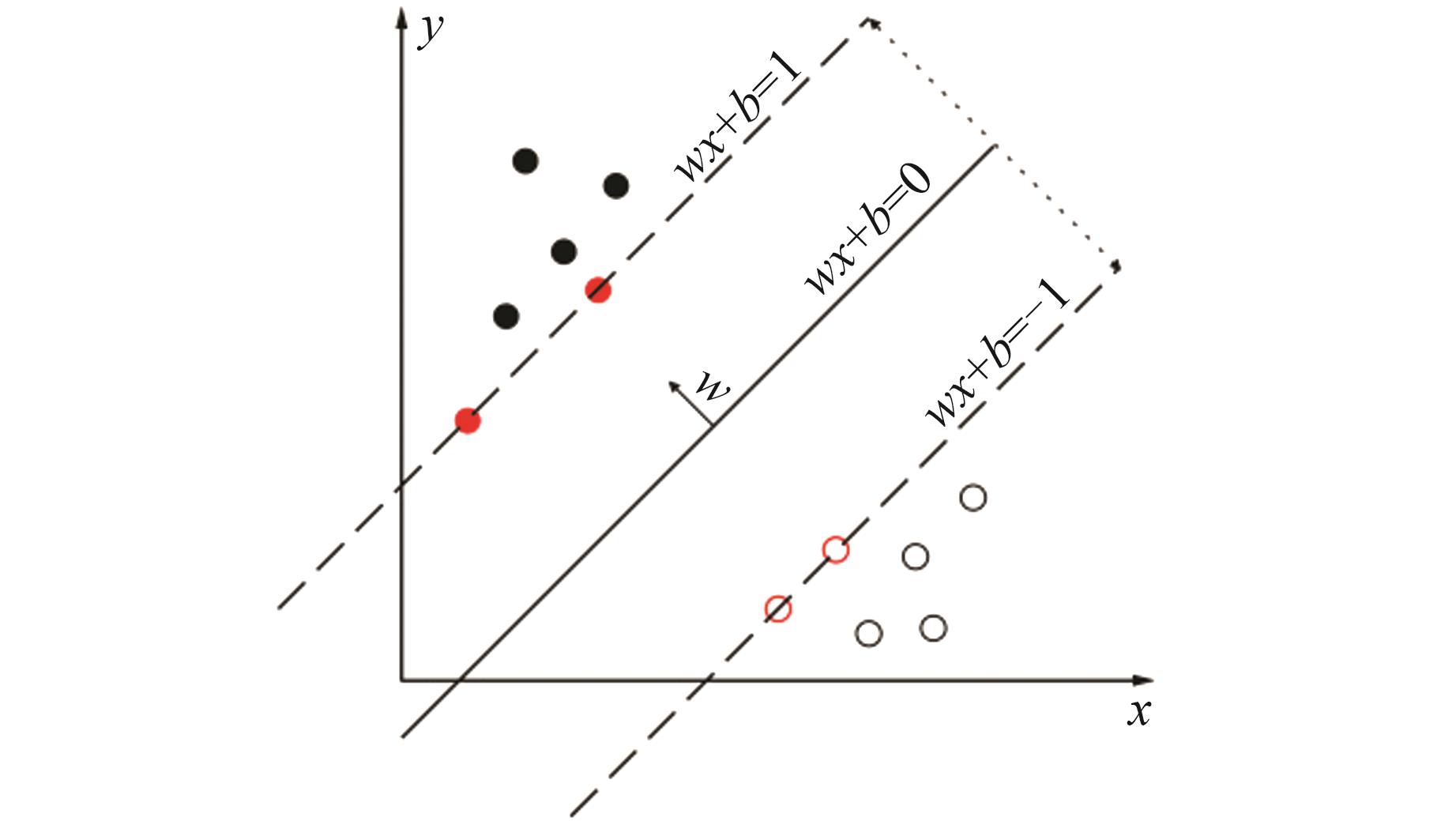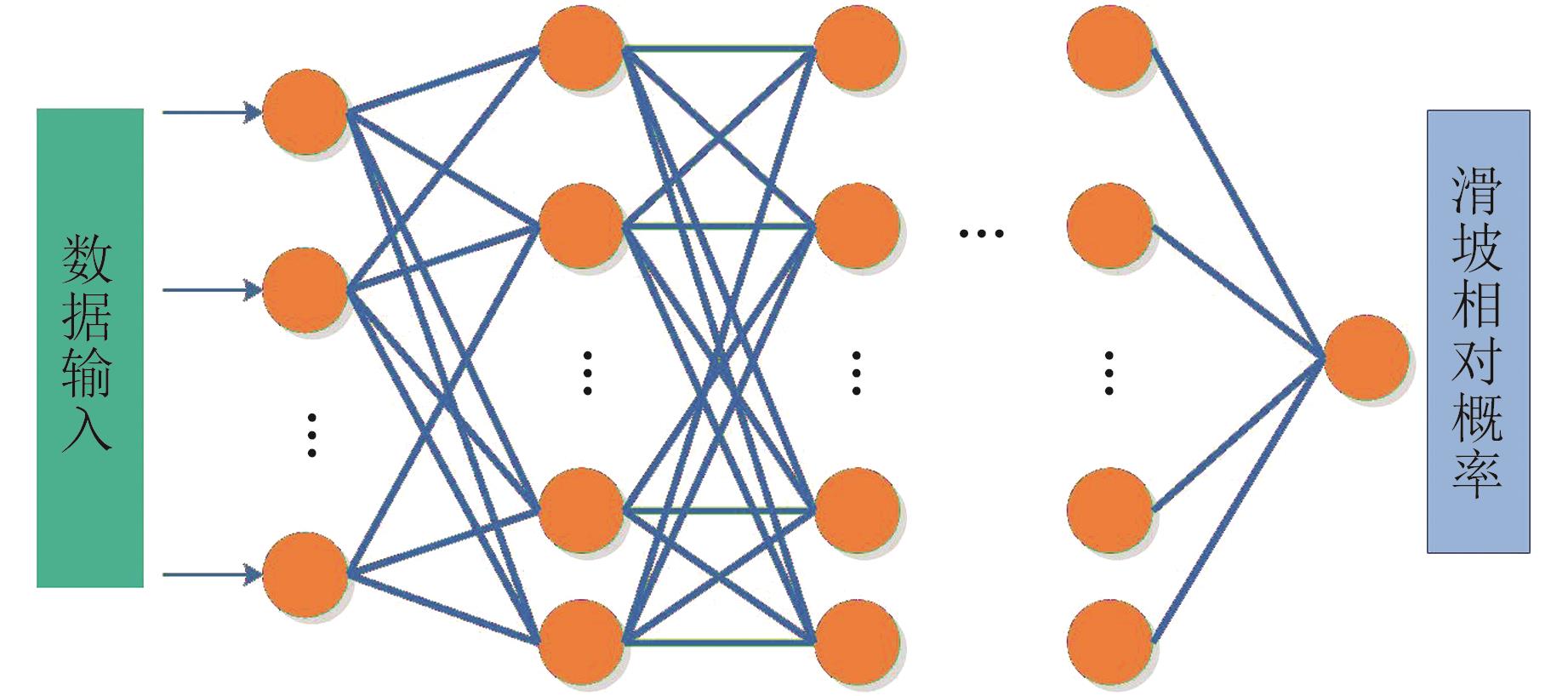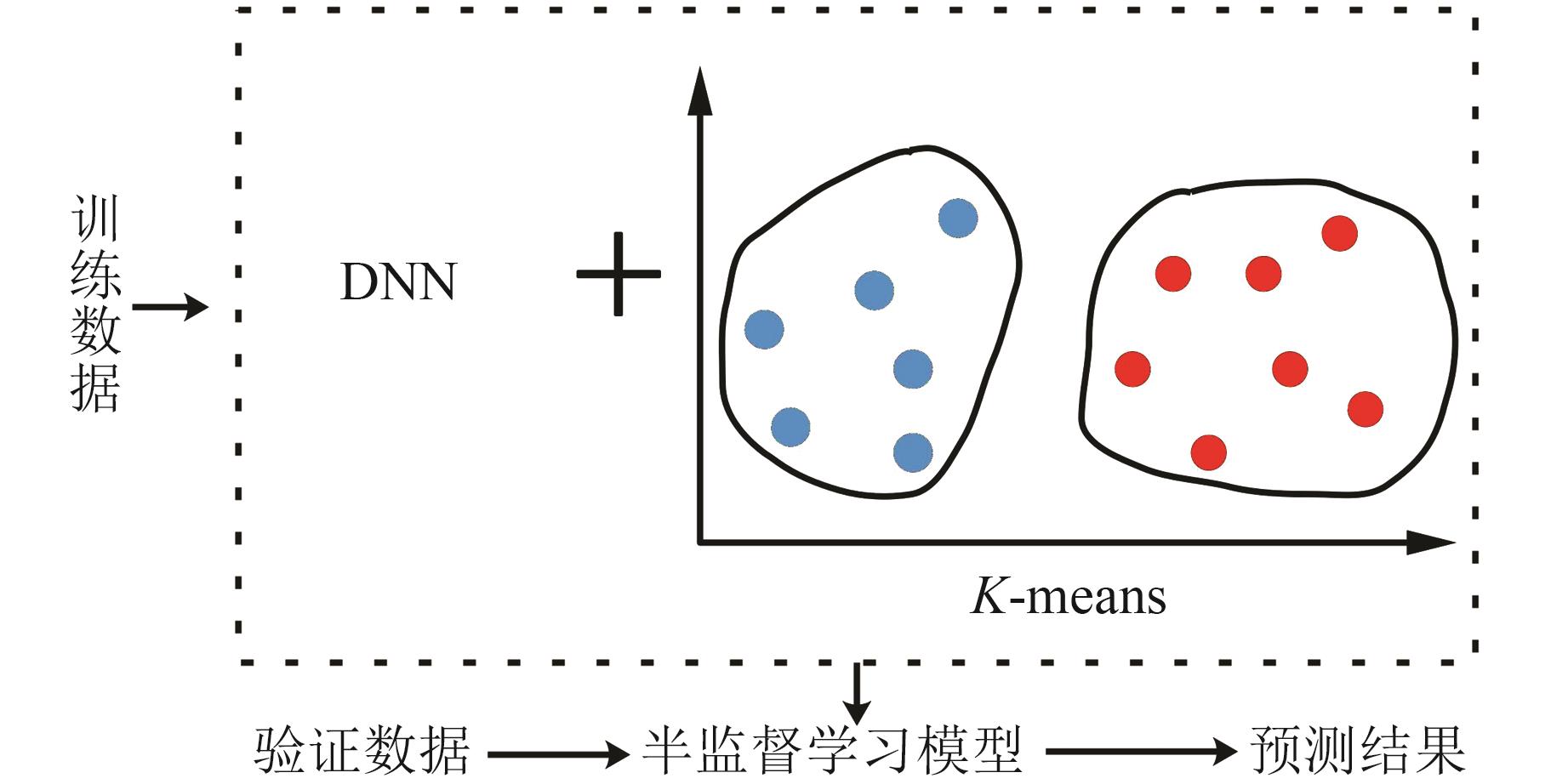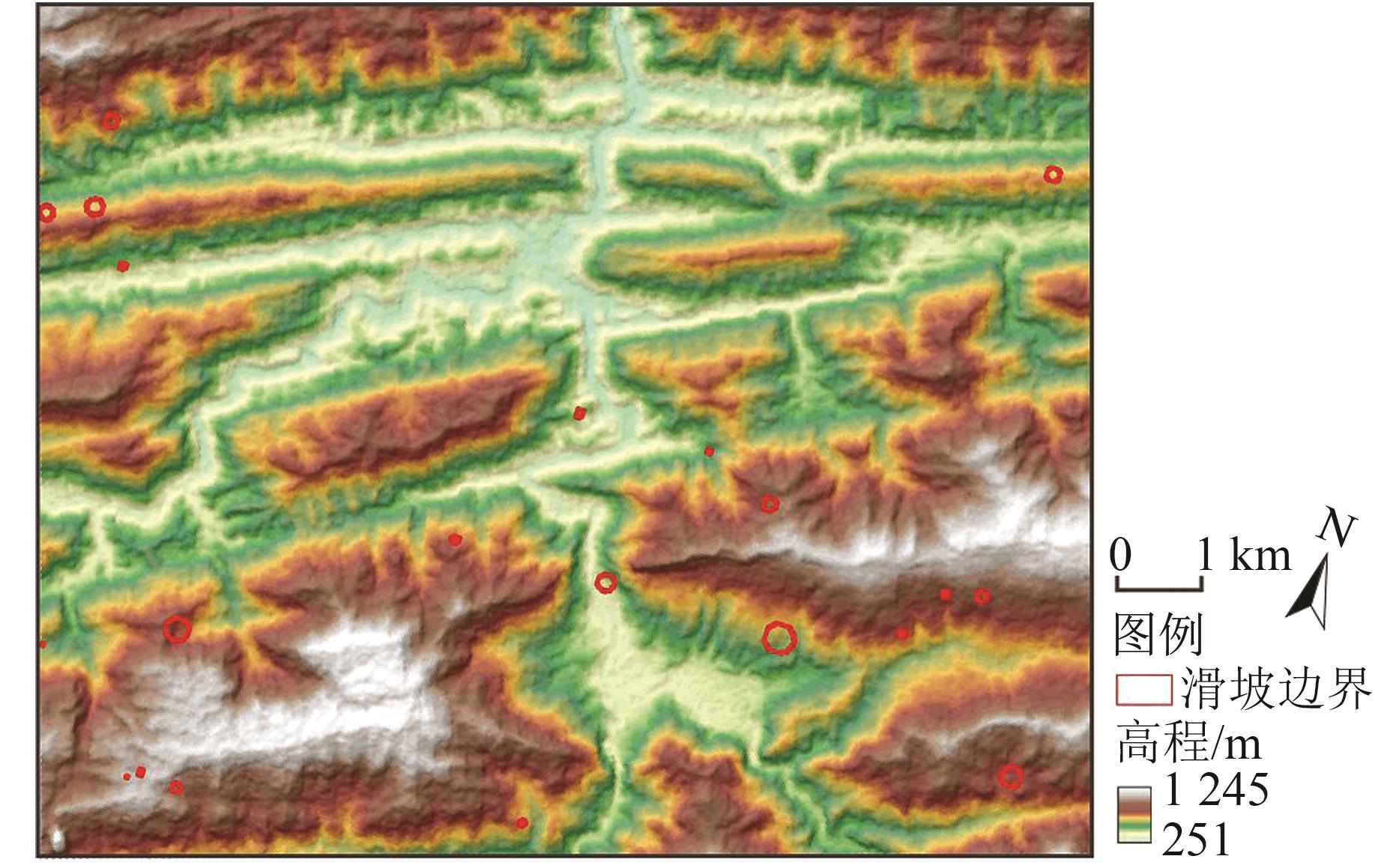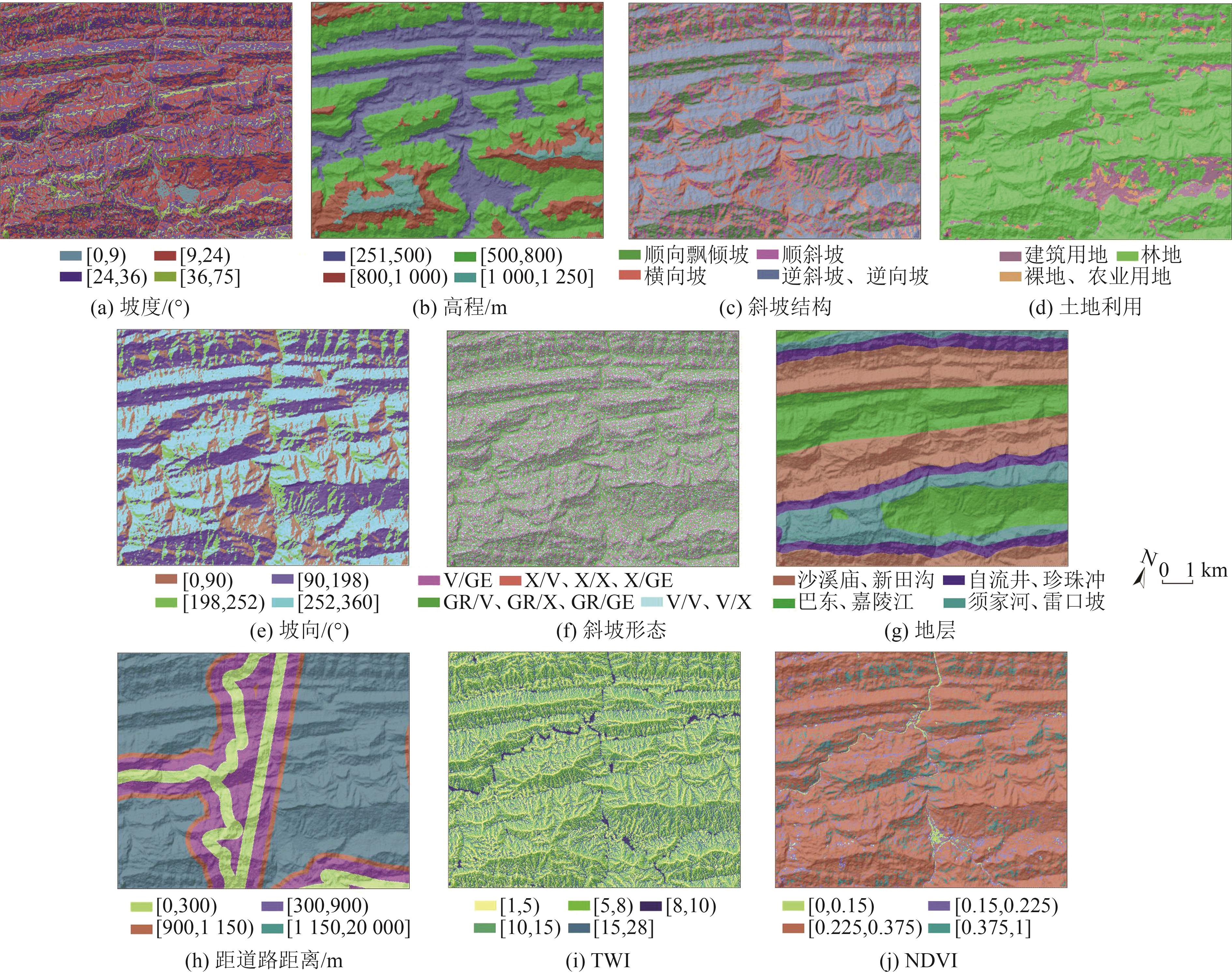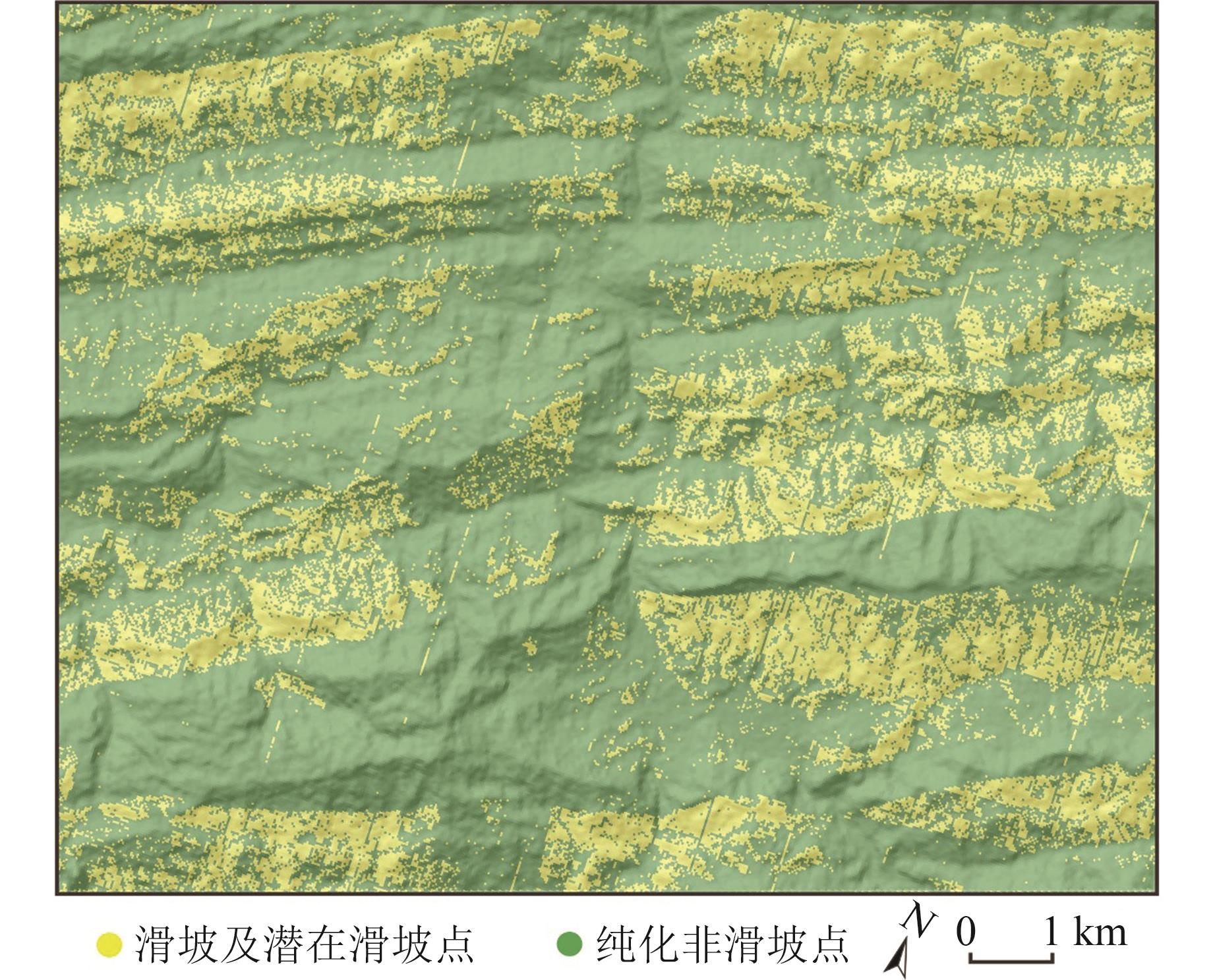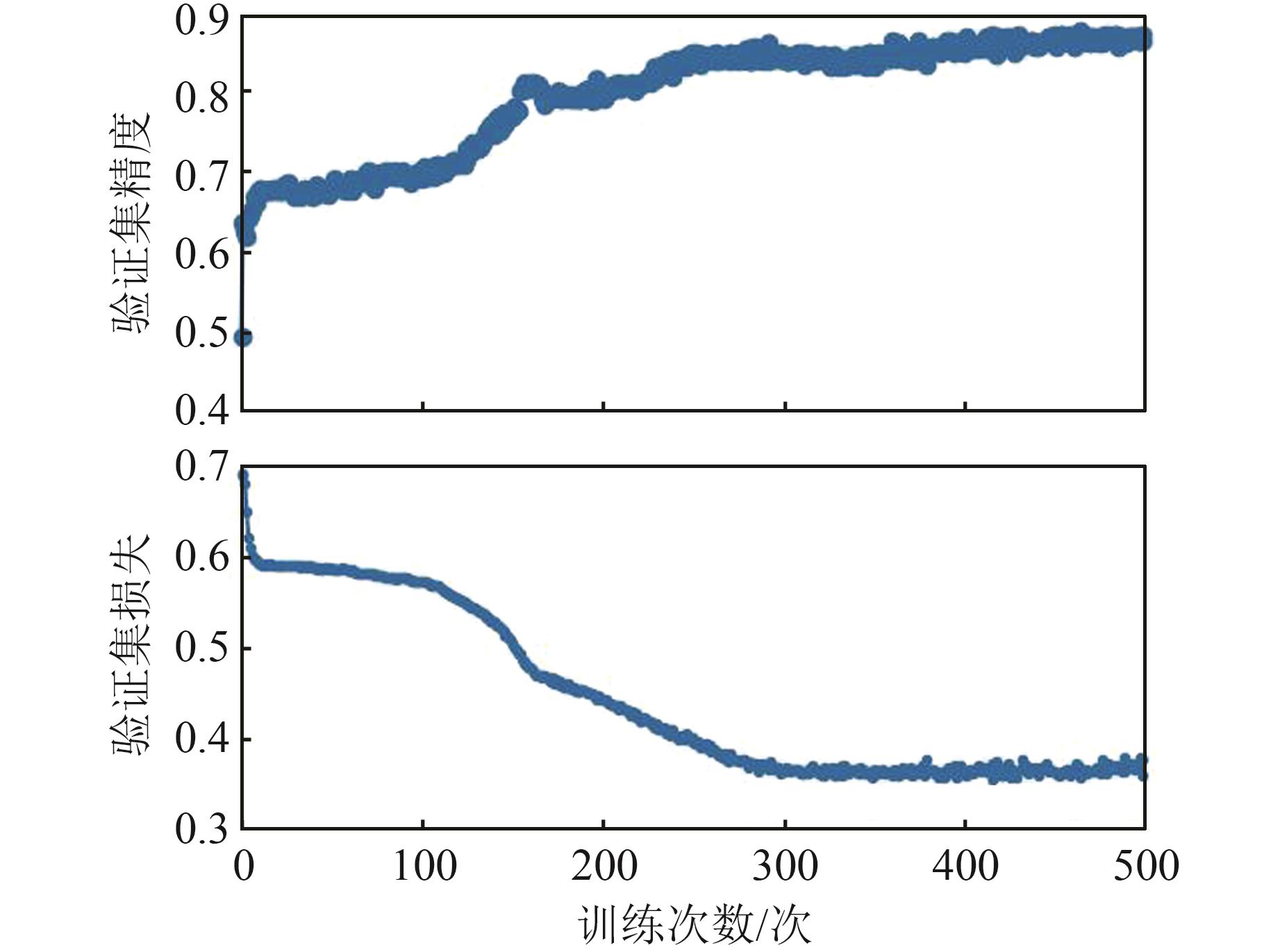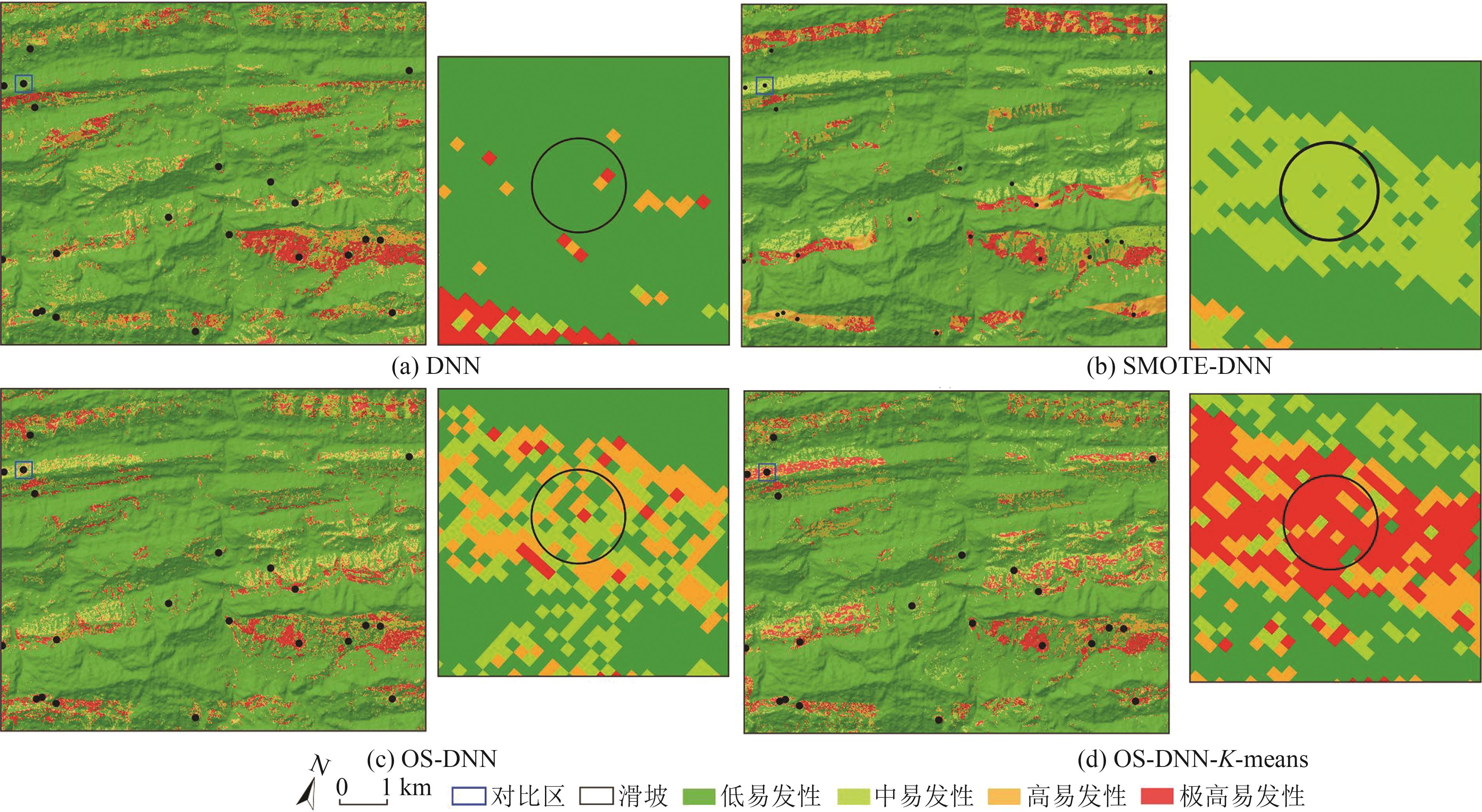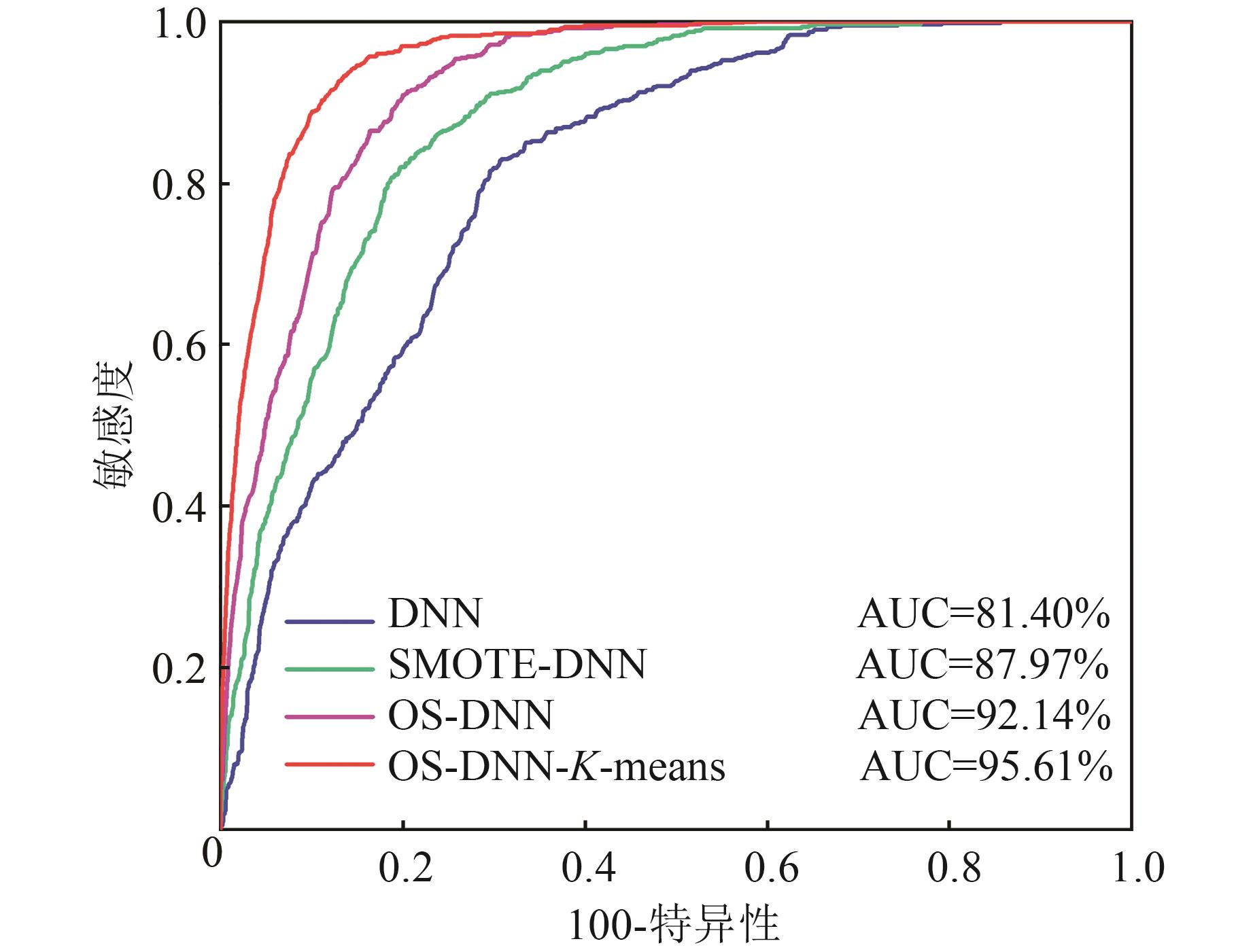Evaluation of Landslide Susceptibility Based on Sample Optimization Strategy
-
摘要:
准确的易发性评价结果能够对滑坡带来的危险进行精准防控。样本优化是滑坡易发性评价的重要方法,可有效解决不平衡样本产生的决策边界偏移问题,提升滑坡易发性评价精度。以中国重庆市万州区东南区域为例,选取地层、土地利用、高程等10个影响因子构建滑坡易发性评价指标体系,应用频率比方法定量分析滑坡与指标之间的关系,在此基础上分别利用深度神经网络模型(deep neural networks, DNN)、过采样-深度神经网络模型(synthetic minority oversampling technique-DNN, SMOTE-DNN)、混合采样-深度神经网络耦合模型(one-class support vector machine-SMOTE-DNN, OS-DNN)、混合采样-深度神经网络-K均值聚类耦合模型(OS-DNN-K-means)进行滑坡易发性评价。结果表明,距道路距离、土地利用、地层是研究区滑坡发育的主要控制因子。精度评价结果发现OS-DNN-K-means(95.61%)和OS-DNN(91.16%)相较于模型SMOTE-DNN(87.97%)和DNN(81.40%)更能有效提高滑坡预测精度。通过混合采样和半监督分类进行样本优化能够有效解决研究区样本不平衡问题,为滑坡灾害空间预测提供新技术支撑。
Abstract:ObjectivesAccurate susceptibility evaluation results can accurately prevent and control the dangers caused by landslides. Sample optimization is an important method for landslide susceptibility evaluation, which can effectively solve the problem of decision boundary offset generated by unbalanced samples and improve the accuracy of landslide susceptibility evaluation.
MethodsTaking the southeast area of Wanzhou District of Chongqing, China as an example, ten influencing factors such as strata, land use and elevation were selected to construct a landslide susceptibility evaluation index system, and the relationship between landslide and the indices was quantitatively analyzed by frequency ratio method, and on this basis, deep neural network model (DNN), synthetic minority oversampling technique-DNN model (SMOTE-DNN), one-class support vector machine-DNN coupling model (OS-DNN), and OS-DNN-K-means clustering coupling model (OS-DNN-K-means) were used to evaluate landslide susceptibility.
ResultsThe results show that the distance from the road, land use and strata are the main control factors for landslide development in the study area. The accuracy evaluation results show that OS-DNN-K-means (95.61%) and OS-DNN (91.16%) could improve the landslide prediction accuracy more effectively compared with SMOTE-DNN (87.97%) and DNN (81.40%).
ConclusionsSample optimization through mixed sampling and semi-supervised classification can effectively solve the problem of sample imbalance in the study area, and provide new technical support for spatial prediction of landslide disasters.
-
http://ch.whu.edu.cn/cn/article/doi/10.13203/j.whugis20220527
-
表 1 实验数据来源
Table 1 Data Information of This Study
类型 比例尺或精度 来源 Landsat影像 30 m 地理空间数据云 地形数据 30 m 地理空间数据云 地质图 1∶50 000 万州区自然资源管理局提供 土地利用数据 30 m EULUC-China数据集 倾角 30 m 野外实测插值 倾向 30 m 野外实测插值 表 2 指标相关性
Table 2 Correlation of Indicator Factors
指标 土地利用 距道路距离 斜坡结构 NDVI 地层 斜坡形态 TWI 高程 坡向 坡度 土地利用 1 -0.02 0.01 0.14 -0.05 -0.03 -0.08 0.07 0.01 0.18 距道路距离 -0.02 1 0 -0.04 0.13 0 0 0.1 0.07 -0.06 斜坡结构 0.01 0 1 -0.16 0.05 0 -0.01 -0.01 0.36 0 NDVI 0.14 -0.04 -0.16 1 -0.12 -0.04 -0.09 0.03 -0.15 0.15 地层 -0.05 0.13 0.05 -0.12 1 -0.01 0 0.36 0.02 0 斜坡形态 -0.03 0 0 -0.04 -0.01 1 0.28 -0.08 0 -0.01 TWI -0.08 0 -0.01 -0.09 -0 0.28 1 -0.13 -0.01 -0.09 高程 0.07 0.1 -0.01 0.03 0.36 -0.08 -0.13 1 0 0.09 坡向 0.01 0.07 0.36 -0.15 0.02 0 -0.01 0 1 0.03 坡度 0.18 -0.06 0 0.15 0 -0.01 -0.09 0.09 0.03 1 表 3 各因素状态频率比表
Table 3 The Weighted Information Values of Each Factor State
指标 分级 频率比 指标 分级 频率比 坡度 [0°, 9°) 0.79 NDVI [0, 0.15) 0.00 [9°, 24°) 1.23 [0.15, 0.225) 0.65 [24°, 36°) 0.92 [0.225, 0.375) 1.04 [36°, 75°] 0.44 [0.375, 1] 1.00 坡向 [0°, 90°) -0.69 地层 沙溪庙、新田沟 0.71 [90°, 198°) 0.41 自流井、珍珠冲 2.43 [198°, 252°) 0.60 巴东、嘉陵江 0.04 [252°, 360°] -0.59 须家河、雷口坡 2.32 高程 [251, 500) m 0.36 斜坡结构 顺向飘倾坡 1.34 [500, 800) m 1.56 顺斜坡 1.45 [800, 1 000) m 0.80 横向坡 1.06 [1 000, 1 250] m 0.00 逆斜坡、逆向坡 0.55 TWI [1, 5) 1.01 距道路距离 [0, 300) m 0.15 [5, 8) 0.80 [300, 900) m 0.14 [8, 10) 1.14 [900, 1 150) m 1.56 [10, 15) 0.99 [1 150, 20 000] m 1.26 [15, 28] 0.34 内向凹形坡(V/V)、内向凸形坡(V/X) 1.34 土地利用 建筑用地 2.63 斜坡形态 内向直线坡(V/GE) 1.45 林地 0.79 外向凹形坡(X/V)、外向凸形坡(X/X)、外向直线坡(X/GE) 1.06 裸地、农业用地 0.33 直线凹形坡(GR/V)、直线凸形坡(GR/X)、直线形直坡(GR/GE) 0.55 表 4 各易发性等级中滑坡数量占比
Table 4 Proportion of the Number of Landslides in Each Susceptibility Grade
模型 易发性等级 发生滑坡栅格数b 栅格总数c 占总滑坡比例d/% 占总栅格比例e/% 滑坡比率(d/e) DNN 低 290 166 265 0.46 0.83 0.56 中 61 11 666 0.10 0.06 1.67 高 95 12 106 0.15 0.06 2.50 极高 183 10 564 0.29 0.05 5.52 SMOTE-DNN 低 163 166 440 0.26 0.83 0.31 中 100 11 458 0.16 0.06 2.78 高 118 11 855 0.19 0.06 3.17 极高 248 10 848 0.39 0.05 7.29 OS-DNN 低 85 165 954 0.14 0.83 0.16 中 72 12 048 0.11 0.06 1.91 高 138 11 279 0.22 0.06 3.90 极高 334 11 320 0.53 0.06 9.41 OS-DNN-K-means 低 25 165 465 0.04 0.82 0.05 中 37 12 340 0.06 0.06 0.96 高 93 11 225 0.15 0.06 2.64 极高 474 11 571 0.75 0.06 13.06 -
[1] Zhou C,Cao Y,Yin K,et al.Landslide Characterization Applying Sentinel-1 Images and InSAR Technique: The Muyubao Landslide in the Three Gorges Reservoir Area, China[J].Remote Sensing,2020,12: 3385.
[2] Zhou Chao,Yin Kunlong,Cao Ying,et al. Characteristic Comparison of Seepage-Driven and Buoyancy-Driven Landslides in Three Gorges Reservoir Area, China[J].Engineering Geology,2022,301:106590.
[3] 梁鑫, 殷坤龙, 陈丽霞, 等. 库水位波动及降雨作用下巫峡干井子滑坡流-固耦合特征及稳定性分析[J]. 中国地质灾害与防治学报, 2019, 30(1): 30-40. Liang Xin, Yin Kunlong, Chen Lixia, et al. Flow-solid Coupling Characteristics and Stability Analysis of Ganjingzi Landslide in the Wu Gorge Under Reservoir Water Level Fluctuation and Rainfall[J]. The Chinese Journal of Geological Hazard and Control, 2019, 30(1): 30-40.
[4] 邱海军. 区域滑坡崩塌地质灾害特征分析及其易发性和危险性评价研究: 以宁强县为例[D]. 西安: 西北大学, 2012. Qiu Haijun.Study on the Regional Landslide Characteristic Analysis and Hazard Assessment: A Case Study of Ningqiang County [D].Xi’an: Northwest University, 2012.
[5] Bragagnolo L,Silva R,Grzybowski J.Artificial Neural Network Ensembles Applied to the Mapping of Landslide Susceptibility[J].Catena,2020,184: 104240.
[6] Bai S B, Wang J, Lü G N, et al. GIS-based Logistic Regression for Landslide Susceptibility Mapping of the Zhongxian Segment in the Three Gorges Area, China[J]. Geomorphology, 2010, 115(1): 23-31.
[7] Long J J, Liu Y, Li C D, et al. A Novel Model for Regional Susceptibility Mapping of Rainfall-Reservoir Induced Landslides in Jurassic Slide-prone Strata of Western Hubei Province, Three Gorges Reservoir Area[J]. Stochastic Environmental Research and Risk Assessment, 2021, 35(7): 1403-1426.
[8] 陈飞, 蔡超, 李小双, 等. 基于信息量与神经网络模型的滑坡易发性评价[J]. 岩石力学与工程学报, 2020, 39(S1): 2859-2870. Chen Fei, Cai Chao, Li Xiaoshuang, et al. Evaluation of Landslide Susceptibility Based on Information Quantity and Neural Network Model[J]. Chinese Journal of Rock Mechanics and Engineering, 2020, 39(S1): 2859-2870.
[9] Ghorbanzadeh O, Shahabi H, Crivellari A, et al. Landslide Detection Using Deep Learning and Object-based Image Analysis[J]. Landslides, 2022, 19(4): 929-939.
[10] Shahabi H, Rahimzad M, Tavakkoli Piralilou S, et al. Unsupervised Deep Learning for Landslide Detection from Multispectral Sentinel-2 Imagery[J]. Remote sensing, 2021, 13(22): 4698.
[11] Dou J, Yunus A P, Merghadi A, et al. Different Sampling Strategies for Predicting Landslide Susceptibilities Are Deemed less Consequential with Deep Learning[J]. The Science of the Total Environment, 2020, 720: 137320.
[12] Yao J, Qin S, Qiao S, et al. Assessment of Landslide Susceptibility Combining Deep Learning with Semi-Supervised Learning in Jiaohe County, Jilin Province, China[J]. Applied Sciences, 2020, 10(16): 5640.
[13] Chawla N V, Japkowicz N, Kotcz A. Editorial: Special Issue on Learning from Imbalanced Data Sets[J]. ACM SIGKDD Explorations Newsletter: Special Issue on Learning from Imbalanced Datasets, 2007, 6(1): 1-6.
[14] 王博文, 王景升, 吴恩重. 面向不平衡数据集的SMOTENC-XGBoost驾驶人交通安全评估模型[J]. 科学技术与工程, 2023, 23(2): 831-837. Wang Bowen, Wang Jingsheng, Wu Enzhong. SMOTENC-XGBoost Driver Traffic Safety Assessment Model for Unbalanced Dataset[J]. Science Technology and Engineering, 2023, 23(2): 831-837.
[15] Liu X Y, Wu J X, Zhou Z H. Exploratory Undersampling for Class-Imbalance Learning[J]. IEEE Transactions on Systems, Man, and Cybernetics Part B, Cybernetics: A Publication of the IEEE Systems, Man, and Cybernetics Society, 2009, 39(2): 539-550.
[16] Tsai C F, Lin W C, Hu Y H, et al. Under-Sampling Class Imbalanced Datasets by Combining Clustering Analysis and Instance Selection[J]. Inf Sci, 2019, 477: 47-54.
[17] 黄发明, 陈彬, 毛达雄, 等. 基于自筛选深度学习的滑坡易发性预测建模及其可解释性[J]. 地球科学, 2023, 48(5): 1696-1710. Huang Faming, Chen Bin, Mao Daxiong, et al. Landslide Susceptibility Prediction Modeling and Interpretability Based on Self-screening Deep Learning Model[J]. Earth Science, 2023, 48(5): 1696-1710.
[18] 刘稀文, 段隆振, 段文影. 基于FCM的簇内欠采样算法[J]. 南昌大学学报(理科版), 2021, 45(5): 437-444. Liu Xiwen, Duan Longzhen, Duan Wenying. Fuzzy C-means Clustering Based Undersampling in Clusters[J]. Journal of Nanchang University (Natural Science), 2021, 45(5): 437-444.
[19] Seiffert C, Khoshgoftaar T M, Van Hulse J, et al. RUSBoost: A Hybrid Approach to Alleviating Class Imbalance[J]. IEEE Transactions on Systems, Man, and Cybernetics - Part A: Systems and Humans, 2010, 40(1): 185-197.
[20] 盛铭, 陈凌珊, 汪俊杰, 等. 基于单分类支持向量机的CAN总线异常检测方法[J]. 汽车技术, 2020(5): 21-25. Sheng Ming, Chen Lingshan, Wang Junjie, et al. Abnormity Detection Method for In-vehicle CAN Bus Based on One-class SVM[J]. Automobile Technology, 2020(5): 21-25.
[21] Wang Y M, Wu X L, Chen Z J, et al. Optimizing the Predictive Ability of Machine Learning Methods for Landslide Susceptibility Mapping Using SMOTE for Lishui City in Zhejiang Province, China[J]. International Journal of Environmental Research and Public Health, 2019, 16(3): 368.
[22] 黎旭,陈家兑,吴永明,等.基于改进SMOTE的制造过程不平衡数据分类策略[J].计算机工程与应用, 2022, 58(16): 284-291 Li Xu, Chen Jiadui, Wu Yongming, et al. Classification Strategy of Imbalanced Data in Manufacturing Process Based on Improved SMOTE[J/].Computer Engineering and Application, 2022, 58(16): 284-291.
[23] 姜万冬, 席江波, 李振洪, 等. 模拟困难样本的Mask R-CNN滑坡分割识别[J]. 武汉大学学报(信息科学版), 2023, 48(12): 1931-1942. Jiang Wandong,Xi Jiangbo,Li Zhenhong,et al. Landslide Detection and Segmentation Using Mask R-CNN with Simulated Hard Samples[J].Geomatics and Information Science of Wuhan University, 2023, 48(12): 1931-1942.
[24] 廖一迁,岳显昌,吴雄斌,等.基于AIS和Canopy+K-means算法的高频雷达阵列幅相校准[J].现代雷达,2023,45(9):9-15. Liao Yiqian, Yue Xianchang, Wu Xiongbin, et al. Amplitude Calibration of High-Frequency Radar Arrays Based on AIS and Canopy+K-means Algorithm[J].Modern Radar,2023,45(9):9-15.
[25] Xiao T, Segoni S, Liang X, et al. Generating Soil Thickness Maps by Means of Geomorphological-empirical Approach and Random Forest Algorithm in Wanzhou County, Three Gorges Reservoir[J]. Geoscience Frontiers, 2023,14(2),101514.
[26] 郭子正, 殷坤龙, 付圣, 等. 基于GIS与WOE-BP模型的滑坡易发性评价[J]. 地球科学, 2019, 44(12): 4299-4312. Guo Zizheng, Yin Kunlong, Fu Sheng, et al. Evaluation of Landslide Susceptibility Based on GIS and WOE-BP Model[J]. Earth Science, 2019, 44(12): 4299-4312.
[27] 武雪玲, 杨经宇, 牛瑞卿. 一种结合SMOTE和卷积神经网络的滑坡易发性评价方法[J]. 武汉大学学报(信息科学版), 2020, 45(8): 1223-1232. Wu Xueling, Yang Jingyu, Niu Ruiqing. A Landslide Susceptibility Assessment Method Using SMOTE and Convolutional Neural Network[J]. Geomatics and Information Science of Wuhan University, 2020, 45(8): 1223-1232.
[28] 王佳佳, 殷坤龙, 肖莉丽. 基于GIS和信息量的滑坡灾害易发性评价: 以三峡库区万州区为例[J]. 岩石力学与工程学报, 2014, 33(4): 797-808. Wang Jiajia, Yin Kunlong, Xiao Lili. Landslide Susceptibility Assessment Based on GIS and Weighted Information Value: A Case Study of Wanzhou District, Three Gorges Reservoir[J]. Chinese Journal of Rock Mechanics and Engineering, 2014, 33(4): 797-808.
[29] 刘渊博, 牛瑞卿, 于宪煜, 等. 旋转森林模型在滑坡易发性评价中的应用研究[J]. 武汉大学学报(信息科学版), 2018, 43(6): 959-964. Liu Yuanbo, Niu Ruiqing, Yu Xianyu, et al. Application of the Rotation Forest Model in Landslide Susceptibility Assessment[J]. Geomatics and Information Science of Wuhan University, 2018, 43(6): 959-964.
[30] 郭子正, 殷坤龙, 黄发明, 等. 基于滑坡分类和加权频率比模型的滑坡易发性评价[J]. 岩石力学与工程学报, 2019, 38(2): 287-300. Guo Zizheng, Yin Kunlong, Huang Faming, et al. Evaluation of Landslide Susceptibility Based on Landslide Classification and Weighted Frequency Ratio Model[J]. Chinese Journal of Rock Mechanics and Engineering, 2019, 38(2): 287-300.
[31] 周超, 殷坤龙, 向章波, 等. 基于GIS的淳安县滑坡易发性定量评价[J]. 安全与环境工程, 2015, 22(1): 45-50. Zhou Chao,Yin Kunlong,Xiang Zhangbo,et al. Quantitative Evaluation of the Landslide Susceptibility in Chun’an County Based on GIS[J]. Safety and Environmental Engineering,2015,22(1):45-50.
[32] 王赞, 闫明, 刘爽, 等. 深度神经网络测试研究综述[J]. 软件学报, 2020, 31(5): 1255-1275. Wang Zan, Yan Ming, Liu Shuang, et al. Survey on Testing of Deep Neural Networks[J]. Journal of Software, 2020, 31(5): 1255-1275.
[33] 祝钧桃, 姚光乐, 张葛祥, 等. 深度神经网络的小样本学习综述[J]. 计算机工程与应用, 2021, 57(7): 22-33. Zhu Juntao, Yao Guangle, Zhang Gexiang, et al. Survey of few Shot Learning of Deep Neural Network[J]. Computer Engineering and Applications, 2021, 57(7): 22-33.
[34] Zhou C, Yin K L, Cao Y, et al. Landslide Susceptibility Modeling Applying Machine Learning Methods: A Case Study from Longju in the Three Gorges Reservoir Area, China[J]. Computers & Geosciences, 2018, 112: 23-37.
-
期刊类型引用(4)
1. 朱杰,郑加柱,陈红华,杨静,胡平昌,陆敏燕. 结合POI数据的南京市商业中心识别与集聚特征研究. 现代测绘. 2022(06): 34-39 .  百度学术
百度学术
2. 金澄,安晓亚,陈占龙,马啸川. 矢量居民地多边形多级图划分聚类方法. 武汉大学学报(信息科学版). 2021(01): 19-29 .  百度学术
百度学术
3. 张铭龙,何贞铭. 基于因子分析法的城市商业中心抽取研究. 地理空间信息. 2021(08): 58-60+64+5 .  百度学术
百度学术
4. 李卫东,张铭龙,段金龙. 基于POI数据的南京市空间格局定量研究. 世界地理研究. 2020(02): 317-326 .  百度学术
百度学术
其他类型引用(3)





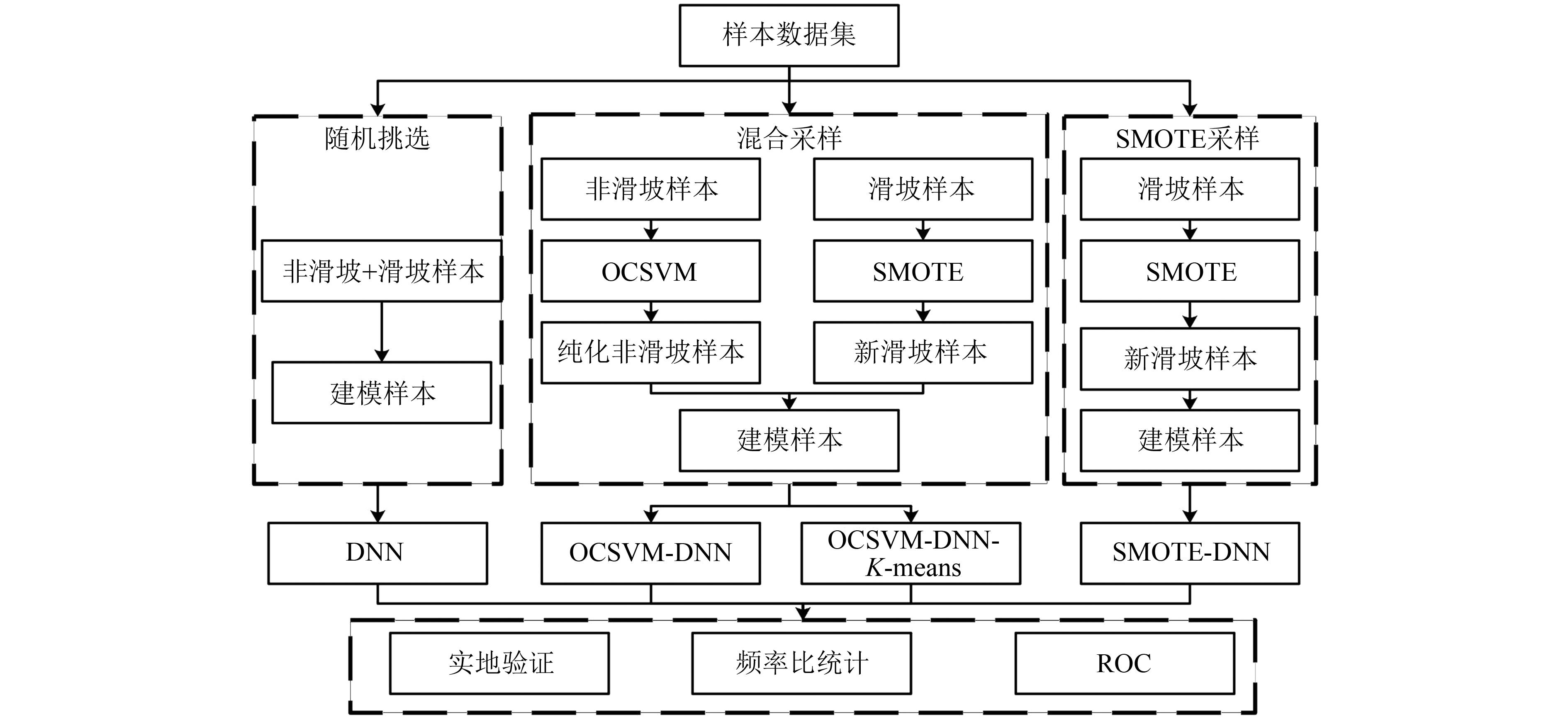
 下载:
下载:
